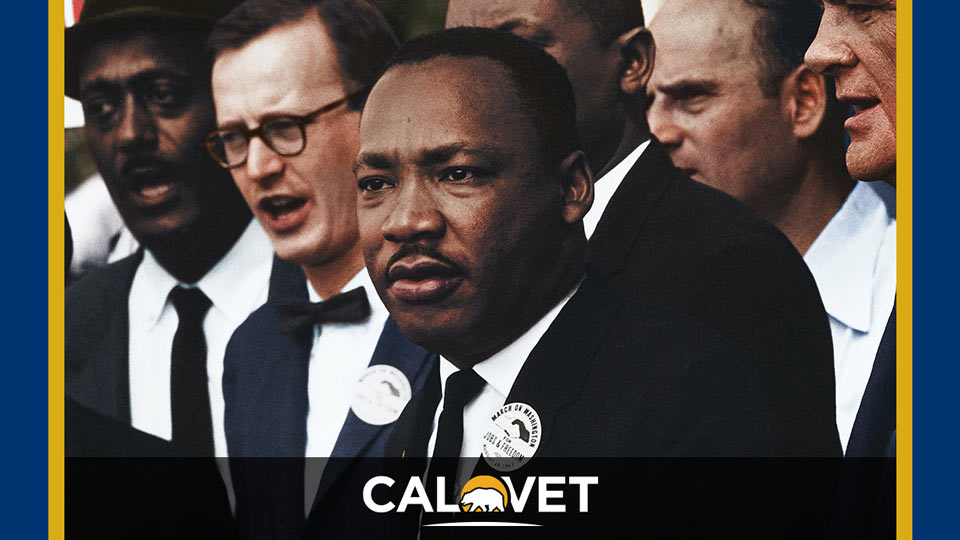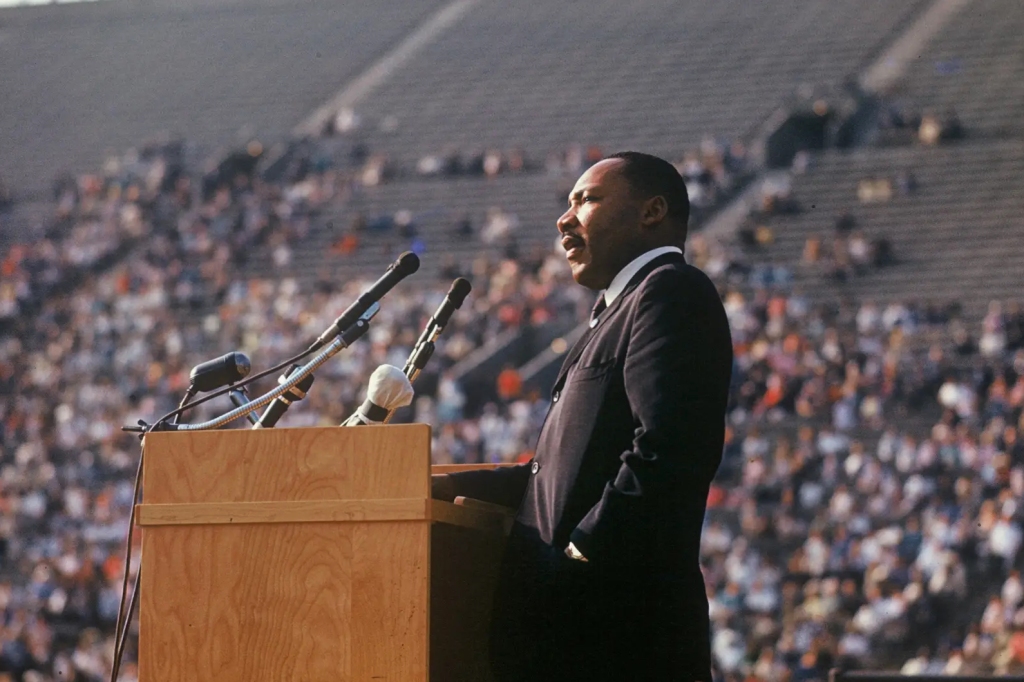
January 17, 2022 - By - As we commemorate what would have been Dr. Martin Luther King Jr.’s 93rd birthday (albeit January 15), his image forever remains etched in American history.
 Dr. Martin Luther King during his speech at the Los Angeles Memorial Coliseum
Dr. Martin Luther King during his speech at the Los Angeles Memorial Coliseum
From his “I have a Dream” speech at the Lincoln Memorial in 1963, to leading the civil rights protest march to Selma, Alabama, in 1965, to his voice resonating in recordings of his “I’ve been to the Mountaintop” speech the day before he was assassinated in April 1968, King became an indelible part of this nation’s ongoing story. His work impacted and continues to impact a nation in which skin color and race are at the forefront of the demand for equality and justice.
Because so many of King’s defining events happened in the eastern and southern regions of the United States, the times he came to California are largely overlooked. Yet King visited here frequently in the 1950s and 1960s. He went to Los Angeles-area college and university campuses, speaking about… the fight against racism and improving the lives of Black Americans. He helped host an “integration ball” near the University of Southern California (USC) to raise money used to stage marches for school integration in Washington, D.C. in 1958 and 1959.
As John F. Kennedy received the Democratic Party’s presidential nomination in Los Angeles in 1960, King led a group of 5,000 people who protested to make civil rights a part of the party’s platform. The Democrats promised to uphold the Civil Rights Acts of 1957 and 1960 as a result.
In July of that same year, King and others conducted a sit-in at a Woolworth’s in downtown Los Angeles, as part of a movement that began when staff at the Woolworth’s diner counter in Greensboro, NC refused to serve four Black students five months earlier.
 Dr. King at Freedom Rally, Wrigley Field, Los Angeles.
Dr. King at Freedom Rally, Wrigley Field, Los Angeles.
Joined by then-Governor Edmund Brown Sr., King spoke to 25,000 for a freedom rally at the Los Angeles Arena in 1961.
In 1963, King drew almost 40,000 to Los Angeles’ Wrigley Field, where Pacific Coast League teams played and the Los Angeles (now Anaheim) Angels first called home after becoming a major-league expansion team in 1961.
A year later, he spoke to 15,000 people at the Los Angeles Memorial Coliseum. There, he urged Californians to uphold a fair housing law known as the Rumford Act, passed in 1963, and to oppose Proposition 14, which sought to overturn it. He also made numerous visits to San Francisco, including one in 1964 in an attempt to stop Proposition 14. Proposition 14 passed, but later was overturned by the California State Supreme Court, which ruled that it violated the equal protection clause of the U.S. Constitution’s 14th Amendment, thus leaving the 1963 Rumford Act in place. And he visited San Diego that same year, speaking at San Diego State and California Western University (now Point Loma Nazarene) to large crowds.
King returned to the city following the 1965 unrest in Watts, when Lieutenant Governor Glen Anderson, in charge while Governor Edmund Brown Sr. was in Greece, waited four days before sending in 14,000 National Guard troops to quell the rioting.
When King came back in October 1967, a bomb threat interrupted his speech at USC, as he urged for an intensification to nonviolent protests.”
“We must be able to dislocate cities with massive civil disobedience and without the loss of life and property,” he said. “We must make the power structure react. Riots do no good. They just relieve the guilt of the white community.”
That same month, King spoke to about 7,000 people at Sacramento State College (now California State University, Sacramento).
On a balcony in Memphis, on April 4, 1968, an assassin’s bullet ended King’s life but could not stop his legacy.
Californians helped build it then, and they are part of it now.
Sources: San Diego Union-Tribune, KCRA, Legacy in L.A., USC Trojan Family Magazine.
Source: CalVet








